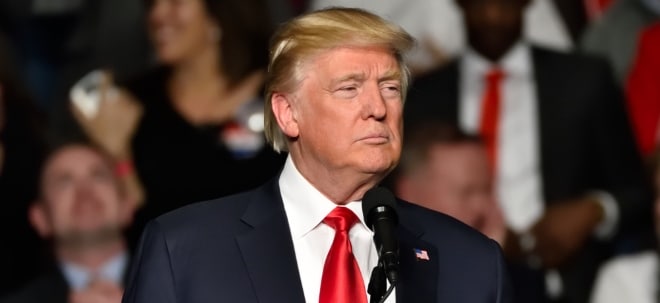Lasst uns diskutieren..... Also, ich habe ein wenig recherchiert und folgendes herausbekommen, leider bist du aber darauf noch nicht eingegangen, obwohl du diese Diskusionen angefangen hast. Recht komisch meiner Meinung nach, aber egal, soll sich jeder selbst ein Bild zu machen.
Durch das Onjuul Lizenzgebiet führt eine Strasse die direkt nach Ulan Bator führt, die Entfernung beträgt ca 175km Luftlinie. Siehe Grafiken: 1. www.imgbox.de/users/public/images/i41821z111.jpg 2. www.imgbox.de/users/public/images/f37449b111.jpg Was eine Strasse oder Eisenbahnlinie kostet habe ich auch herausgesucht. Daten: 100km befestigte Strasse kosten ca 46mio $ 100km Eisenbahnlinie kostet ca 63mio $ Quelle sie Grafik: www.gtai.de/fdb-SE,MKT200908278012,Google.html Ausserdem ist die Regierung bereit 3,3mrd $ in die Verbesserung des Strassensystems und Schienensystems zu investieren, siehe Grafik. Quelle: www.gtai.de/fdb-SE,MKT200908278012,Google.html Zudem kommt, das in der Hauptstadt Ulan Bator ca 39% aller Einwohner der Mongolei wohnen und die Region aus den nahegelegenen Revieren mit Kohle versorgt wird. Quelle: de.wikipedia.org/wiki/Ulaanbaatar Dazu kommt das Thyssen Krupp die sich für das Kohleverflüssigungprojekt interessieren vor Ort und Stelle waren, sprich in Ulan Bator. Dieses Projekt wurde sogar als wirtschaftlich eingestuft, einzige Manko ist die aktuelle Infrastruktur, aber dagegen hat die Mongolei schon was unternommen und ein riesiges Infrastrukturprojekt geplant, siehe obrigen Link (teilweise sind die Arbeite schon aufgenommen worden, siehe Tabelle im obrigen Link). Quelle: www.gtai.de/fdb-SE,MKT200909028010,Google.html
Zu Erdenetsogt, die kompletten Investitionen für dieses Feld findest du hier: Link Grafik: www.ariva.de/forum/anonymize/http://...01/4174183493_182bcc1202_o.jpg Quell: www.sedar.com/DisplayCompanyDocuments.do Hinzu kommt das Gulfside 5% des Feldes besitzt, also werden sie Mitspracherecht haben. Das diese 5% nicht wertlos sind, darüber braucht man nicht zu diskutieren. Der NI Report liegt vor, die Kohlereserven und deren Qualität sind dort aufgeführt, ausserdem existiert ein Vertrag um 49% des Feldes zu erwerben. Quelle: www.gulfsideminerals.com/news/Deutsch09-May26-2.pdf Ausserdem exploriert eine weitere Firma in diesem Gebiet und hält einige Lizenzen die sich neben dem Lizenzgebiet (5% + Erwerb von weiteren 49%) von Gulfside befinden. Link zur Karte: www.ariva.de/forum/anonymize/http://www.imgbox.de/...ges/t22380e8.jpg Quelle Karte: www.poloresources.com/News_2009.htm die News von 07.10.09
Zur Vita von R. Card, bei den anderen Firmen hat er vielleicht kein glückliches Händchen gehabt, aber man sieht anhand von Gulfside das der "alte" Mann doch etwas drauf hat. Wieso es damals zum CTO kam ist jeden bekannt, den Grund dafür hat uns Gulfside genannt. Eigentlich einleuchtend, denn der CTO kam, weil Gulfside nicht fristgerecht den NI Report eingereicht hat, dies taten sie aber nur aus wettbewerblichen Gründen. Wer veröffentlicht schon einen NI Report und zeigt somit der Konkurenz wie wertvoll das Erdenetsogtfeld ist, mit der Angst, am Ende mit leeren Taschen da zu stehen? Klar war diese Zeit bitter für alle Anleger, aber wenn man sich das genauer betrachtet, welcher Geschäftsfúhrer würde nicht so handeln? Quelle: www.gulfsideminerals.com/news/Deutsch-News1-April30-09.pdf Nicht des zu trotz, in dieser langen Zeit des CTO´s wurde anderweitig weiter gearbeitet, so das Gulfside nach dem CTO ein weiteres vielversprechendes Feld präsentieren konnte. Zum aktuellen Zeitpunkt übertreffen die ersten Bohrergebnisse sogar die russischen Gutachten, das zeigt das R. Card richtig Lag mit der Aquisition dieses Feldes. Grafik Bohrungen: www.imgbox.de/users/public/images/c13337j217.jpg Quelle: www.gulfsideminerals.com/news/Deutsch-November24%202009.pdf finance.yahoo.com/news/Gulfside-Minerals-Ltd-Onjuul-cnw-611980401.html Nicht nur das, es wurden zur Zeit 2 Bohrprogramme finanziert und das zu guten Konditionen, die letzte Finanzierung ging zu 1.05$ über den Tisch und spühlte der Firma 3mio$ ein. Zur Zeit ist der Wert recht gering verwässert, das zeigt uns, das dem CEO R. Card einiges daran liegt, nicht zuviele Shares auf den Markt zu bringen. Vielleicht gelingt ihn das alles durch geschicktes Verhandeln? Wer weis das schon, jedenfalls ist das Ergebniss zufriedenstellend. Quelle: www.stockhouse.com alles nachlesbar unter GMG news. Daraus hinaus hat sich der Newsflow um einiges verbessert, wie man anhand der letzten News erkennen kann. Es scheint so, als selbst ein R. Card aus fehlern lernt, denn der Newsflow sah schonmal viel schlechter aus. Wer sich interessiert was die Kanadischen User in ihren Board über Gulfside denken, kann dies bei www.stockhouse.com nachlesen.
Speziel an alle Kritiker, ich würde mich über eine Diskusion freuen, dabei solltet ihr aber eure Aussagen anhand von Links belegen. Eure Meinung zu Card und GMG haben wir hier schon oft genug gelesen und ja, wir wissen das ihr persönlich beiden kritisch gegenübersteht. Dies ist und bleibt aber nur eure persönlich Meinung, was am Ende zählt sind die Fakten die Gulfside zur Zeit auf den Tisch gelegt hat und legen wird. So auf eine erfolgreiche Diskusionsrunde! |


 Thread abonnieren
Thread abonnieren

